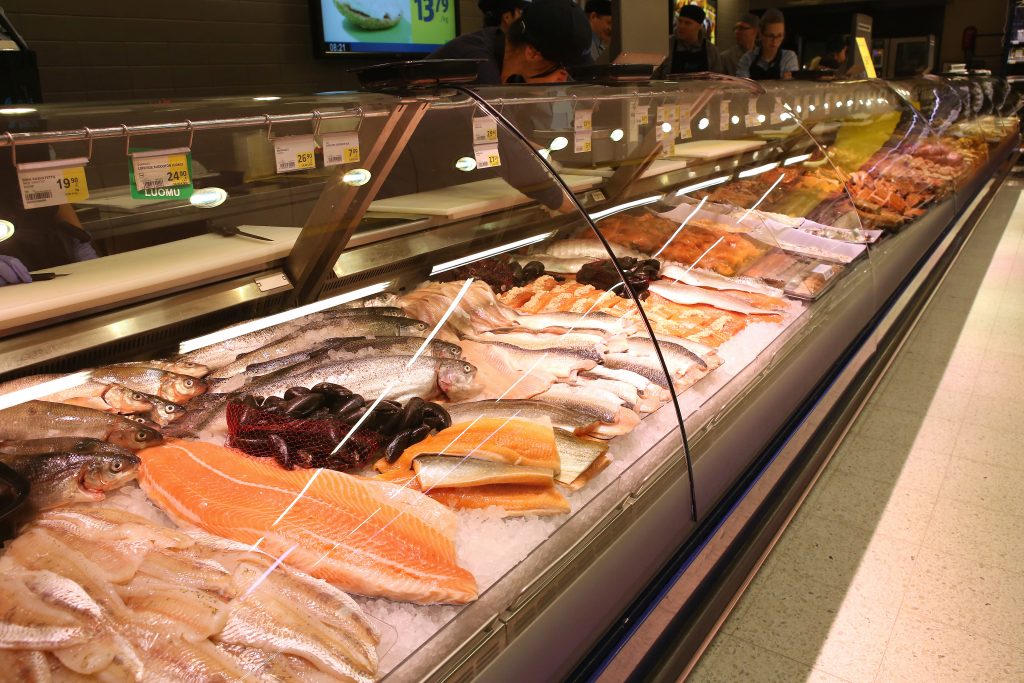Finnish fish is on the rise – is that enough?
Blog - Published 17.12.2018
This past summer, we heard a lot of good news about fish. Projects promoting local fish in coastal and inland areas have successfully created well-functioning chains from fisheries to school and workplace cafeterias and brought excellent new products to the retail market. At the same time, the projects have highlighted the importance of local fish consumption for removing excess nutrients from waterways and the coastline. The fatty acids contained in fish have been shown to have particular health benefits. Although Finland is the largest fishing nation in the Baltic Sea region, only one third of every kilogramme of fish consumed in Finland is produced here, and there was a negative trade balance of EUR 350 million for fish products in 2017. How can we reverse this trend?
Wanted: new herring products
The Marine Stewardship Council granted its sustainable fishing certificate to Baltic herring and sprat caught by trawling and fyke fishing. A project to certify vendace fishing is also underway. The MSC certificate is an international standard recognising ecologically sustainable fishing practices. Many countries are beginning to require an MSC certificate for all fish products on the market, so it is wise to get on board. Studies monitoring the quality of herring have also shown a significant decrease in contaminant levels. This means there is an opening on the market for tasty new Baltic herring products. A total of 134 million kilogrammes of Baltic herring was caught in Finland in 2017, but Finns eat only around 300 g of filleted herring per year.
Growth through sustainable aquaculture
We have also heard positive news about fish farming. New production permits have been granted for recirculating aquaculture and for sites defined in the national aquaculture spatial plan. Fish farming is the fastest-growing form of primary production worldwide. According to an estimate by the UN, the global need for food is expected to increase by as much as 50% by 2030, and the use of marine areas as a source and platform for food production shows great new potential. Protein production in the water is significantly more efficient than on land, as aquatic animals do not require energy to stand or warm their bodies. That said, ecological sustainability has to remain a top priority. Finland has so far been successful in this respect, and Finnish whitefish and rainbow trout have made it onto the list of recommended fish in the WWF’s seafood guide.
Fish processing facilities are expanding
Many fish-producing companies have announced tens of millions of euros in investments for expansions. The markets for Finnish whitefish, perch, zander, roach, bream and pike are excellent, with the demand exceeding the supply. To respond to production needs and maintain well-stocked fish counters, it is essential to supplement wild fish with farmed fish that is available year-round. Norwegian salmon also plays a central role, both as a raw ingredient for the Finnish fish industry and as a versatile food for consumers. Up-to-date information on this topic is available in the most recent Kala & Kauppa magazine (in Finnish), for example.

Better together
The different parts of the fishing industry chain support and depend on one another. For example, the fishmeal contained in feed for farmed fish is produced in part using Baltic herring, which opens up a new market for herring fishers. Other new markets may emerge for high-quality proteins and fatty acids.
The industry also has its fair share of challenges. Record-high temperatures this past summer caused problems for farmers, fishers and fish farmers alike. New methods are needed to reduce the damage caused by seals to commercial fish catches and traps. Aquaculture operators struggle to remain profitable, as is the case with agriculture. Cooperation is needed throughout the value chain, along with open-minded collaboration with other primary production and industry sectors. A good example of this is the symbiosis between recirculating aquaculture and the wood-processing industry.
Positive leverage effects needed from the public sector
The European Maritime and Fisheries Fund is currently supporting several innovation programmes in which research, administration and entrepreneurs work together to seize opportunities and develop new technologies, products and practices to respond to the challenges. It’s also important to remember the importance of attractive education opportunities. The industry needs young, enthusiastic and skilled employees and entrepreneurs.
Is the above-mentioned good news about increased production volumes and a wider range of products enough to fix the trade balance? Here, as in so many cases, the power lies with the consumer, so it’s essential to listen to households, caterers and restaurants and get them to join in on the Finnish fish frenzy.
Read more about the blue bioeconomy on the Ministry of Agriculture and Forestry website.
Research and knowledge agenda for the blue bioeconomy in Finnish and Swedish.
The writer Riitta Rahkonen will be working in her position as a Senior Specialist in the EFF unit of the Ministry of Agriculture and Forestry’s Natural Resources Department until the end of 2018. She has been primarily responsible for preparing the research and knowledge agenda for the blue bioeconomy. In 2019, she will take on a position at the Representation of Finland to the EU in Brussels, working on fishing industry initiatives in connection with Finland’s Presidency of the Council of the European Union.
Contact: riitta.rahkonen(a)mmm.fi, Twitter @riitta_rahkonen
Blue bioeconomy blog series in Bioeconomy.fi.
Published (in Finnish) October 9, 2018.

